Last Updated on January 1, 2024
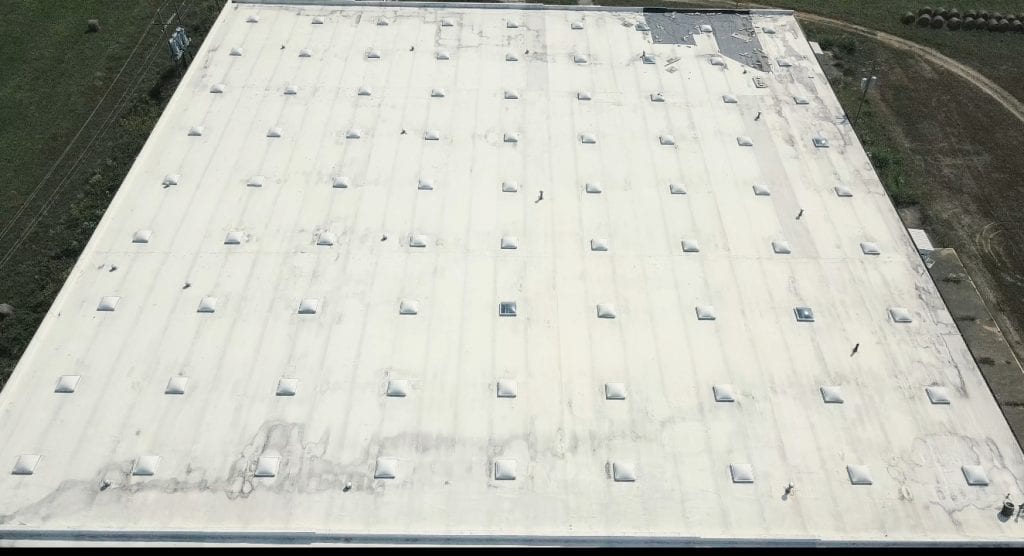
Today’s flat roofs are the most misunderstood components of the entire Building Envelope. Why you ask? That’s simple to answer, kind of. More than likely the roofing system being used today on a building is not the type of roof that is needed for how the building is currently being used.
Sounds confusing right, but think about this:
If a building is 50 years old, it most likely has seen several owners, and possibly a couple of roofs or numerous roof repairs. And it’s very probable that the way the building is being used today is not how the building was being used when it was first constructed.
Here’s an example of that:
If the 50-year building was built originally as having a small office space and the remainder of the building was used as warehouse space, then the roofing system only needed to be built to a standard of what the warehouse space was. Now let’s jump forward along the way. Let’s say that 25 years after original construction, half the warehouse was converted to more office space, then 25 years later the remainder of the warehouse was finally converted to office space. Now the roof system that is needed for this type of building is completely different. The requirement, for building insulation, additional roof penetration, HVAC requirements, occupancy issues, etc…
And here is where the problem comes in. An unskilled or non-qualified contractor shows up and attempts to replace the same old roof that was originally installed, and after the first year or new severe storm season cycle shows up, you are inundated with roof leaks, or excessive moisture issues, or possibly hot or cold spots throughout the structure. All of which lead to continued roof problem’s and a short lived roofing system.
Today more than ever with pandemics that affect our global supply chain and way of life, then pack on the fact about unskilled labor, and the scarcity of qualified labor and then the additional costs to continually train and still yet remain competitive in a super competitive market.
It is imperative that you hire the right roofing contractor for the job who has a thorough understanding of all the aspects that go into the decision tree of how and what a great flat roof needs to perform on your building structure.
If there is one thing I know ands know well, is that we are not a perfect fit for everyone, and any contractor who thinks they are, is simply delusional. So our goal is to help inform you on what do if you have flat roof leaks or other roof related problems, and hopefully give you some information, that will allow you to come up with some good questions, when talking to a commercial roofing contractor.
So Read along and Im going to share with you:
- 6 most commonly installed flat roofs today
- How Building Codes apply to your flat roof
- Why most flat roofs fail too soon
- Low Slope Roofing Insualtion Types
- 7 must before re-roofing
- Handling a dispute with your Roofing Contractor
- The pros and cons of replacing your flat roof
6 most common types of flat roofs installed today
- TPO Roofing
- PVC Roofing
- EPDM Roofing
- Modified Roofing
- Hot Asphalt Roofing (The Original Built-up Roof System)
- Liquid Applied Roof Coatings
Building Codes and your Flat Roof
First of all, we need to understand the need for building codes, and how they apply. Building codes exist today for reasons, such as to protect the general public, from natural disasters, fires, structural collapses, and general wear and tear.
The IBC International Building Codes position is that building codes are intended to establish provisions that:
- adequately protect public health
- the general safety and welfare of the public
- that minimize increased construction cost
- that do not restrict new materials or products and methods of construction
- will not offer preferential treatment to product types or material classes
As the owner of Cook Roofing Company, I believe truly that every building in America needs to have access to a current building codebook, even if you are a homeowner. You should then have a fresh copy of the IRC International Residential Building code. Although and please understand this very carefully. Building codes are just the minimum construction standards required. Although I am glad we have and use them, there are often better ways to build or rebuild.
Now that we have addressed that, here is how those building codes apply to your roof, and roof system. But real quick let me explain what a roof is.
Definition of Roofing Assembly and Roof System.
Roof Assembly and Roof System and other words as defined in the roofing glossary of the NRCA National Roofing Contractors Association
Roofing Assembly: An assembly of interacting roof components including the roof deck, air or vapor retarder (if present), insulation, and membrane or primary roof covering designed to weatherproof a structure.
Roof System: A system of interacting roof components generally consisting of a membrane or primary roof covering and roof insulation (not including the roof deck) designed to weatherproof and sometimes to improve the building’s thermal resistance.
Further explained that the roof assembly consists of the structural deck and roof system. A roof system includes every component above the roof deck.
It is vitally important to understand the difference between a low slope roof and a steep slope roof. The differences are that:
Flat roofs are typically intended to be used over decks that slope to drains equal to or less than 25 percent or (3:12) these low slope or flat roofs will use a weatherproof type of membrane. However, in certain cases, some low slope roof membranes can be installed on steeper slopes and that will be strictly based upon the manufacturer’s written specification.
steep slopes roofs are installed on slopes greater than 25 percent (3:12) and are installed with water shedding roof coverings, such as asphalt shingles, slate, clay or concrete tile, wood shingles, or split cedar shakes.
Notice the key differences between the two. Low Slope roofs have to have weatherproof products that can withstand a completely different type of condition than the water-shedding components of a steep slope roof.
And this my friends is where the trouble begins. An unskilled contractor who does not understand how building codes would or do apply to a new or existing roof system, or how there are significant differences in the ancillary roofing components of a flat roof and a steep roof. Just because some guy on TV magically floats a boat on water, doesn’t mean that that same product can keep water out. Did you ever see the commercial where they flooded the same boat with water? Me either.
Why Flat Roofs fail too soon
This generalization about roof failures oversimplifies the issue, considering the numerous factors involved in roofing assemblies. Roof failures can be compared to a death caused by a thousand small cuts. Minor defects throughout the structure can result in either abrupt failure or gradual infiltration of moisture into the roofing system. This often results in the roof not reaching its full expected lifespan.
In the book Roofing Failures by Carl G Cash. Cash states “there is a good argument that roofing product failure happened when the manufacture thought of it, because no subsequent actions were going to significantly influence the products performance.”
Cash also goes further to to state that:
“failures are usually due to
- inappropriate constraints and other actions by the owner ( my opinion is it is usually a lack of funds)
- design errors
- defective construction work
- inappropriate materials”
- My opinion is basically the same. Most owners today do not have enough funds or the ability to get funds to do what needs to be done to make a building watertight.
- unskilled workers, the use of sub-contractors who the subcontract.
- wrong material for the job. As I stated earlier, there is a difference between weatherproof and water-shedding products.
So in its most simple term. Roofing failure: is probably best defined that if a roof is intended to last 20 or 30 years and you replaced it any time before that, then it failed. You can then add your long list of reasons why that decision was made.
6 Types of Low Slope Roofing Insulation
- Cellular Glass Insulation: A rigid closed-cell insulation board made from crushed glass and hydrogen sulfide gas.
- EPS (expanded polystyrene foam) A type of plastic foam insulation product having a predominately closed-cell structure manufactured from expanded polystyrene beads in a molding process; boards or blocks are formed.
- Mineral Wool: Mineral Wool batts are made of inorganic fibers derived from basalt, volcanic rock and are enhanced with glass fibers. source Johns Manville
- Perlite: An aggregate used in lightweight insulating concrete and preformed perlitic insulation boards, formed by heating and expanding siliceous volcanic glass.
- Polyisocyanurate: A cellular, unfaced, preformed rigid thermal insulation produced by the polymerization of polyisocyanates in the presence of polyhydroxl compounds, catalysts, cell stabilizers, and blowing agents;
- Tapered Insulation: A system of precut or pre-molded insulation boards or a poured insulation fill designed to provide slope to the roof deck before installing the roof membrane.
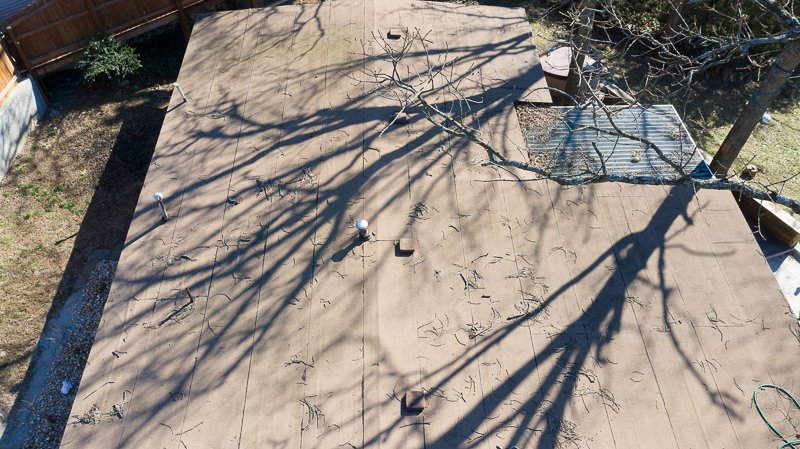
High rise buildings, or buildings with large expanses, are easier to roof with flat roofs. This can also be more energy efficient, since there’s not a large gable space that gets warmed or cooled. Many large retail stores, office buildings, and warehouses utilize flat roofs. And other, smaller buildings do too, such as restaurants. Many of these roofs have a wall around the outside (“parapet wall”), and “scuppers” (holes in the sides) that connect to downspouts for water to drain down. Some flat roofs also have drains built into the roof.
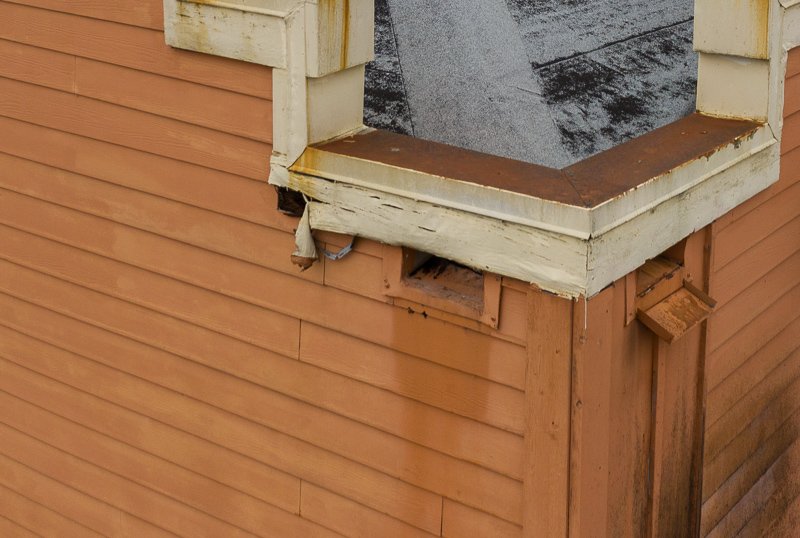
A flat roof can save on structural construction costs, but they are not any less expensive to roof than other types of roof. This surprises people, since you can easily walk on the flat surface. But installation and repair is back-breaking work, and requires painstaking attention to detail to ensure that the end result is completely water-tight.
Types of Flat Roofing Material Systems
EPDM Rubber
This material comes in very large sheets, and is self-adhering (peel and stick). It can be difficult to work with, due to the size of the sheets, but it results in fewer, or no, seams. See our EPDM page here.
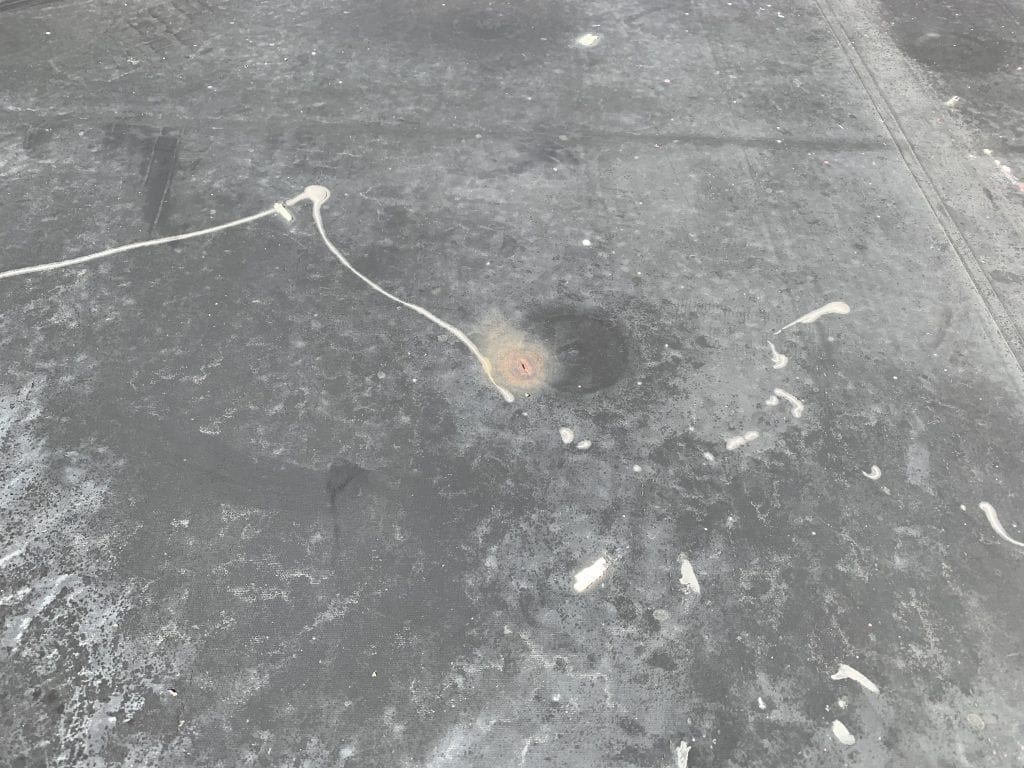
PVC Membrane
Polyvinyl chloride roofing consists of a layer of insulation board, with the PVC membrane welded together at the seams. The material is usually about 6 feet wide, overlaps by 6-8 inches, and is seamed with a hot air welding machine. The edges of the rows of membrane are “mechanically attached” to the roof surface, or “substrate,” before welding the seams together, using plates and screws. It’s also possible to glue the membrane down with adhesive, which is referred to as “fully-adhered.” Fully-adhered has advantages over mechanically attached, but it usually costs a little more.
TPO
Similar to PVC, TPO membrane is installed over insulation boards, and can be mechanically attached or fully adhered. It also comes in rolls similar to PVC.
Modified Roofing
Modified bitumen generally is installed with heat, using torches and roofing tar. Installation is work-intensive and requires someone with experience.
Built-Up Roof
“BUR” is called built-up because it consists of layers of material that are bonded together using hot asphalt. BUR is usually finished with a layer of aggregate, or gravel, on top. An alternative to gravel ballast is a reflective material, which can help save energy costs.
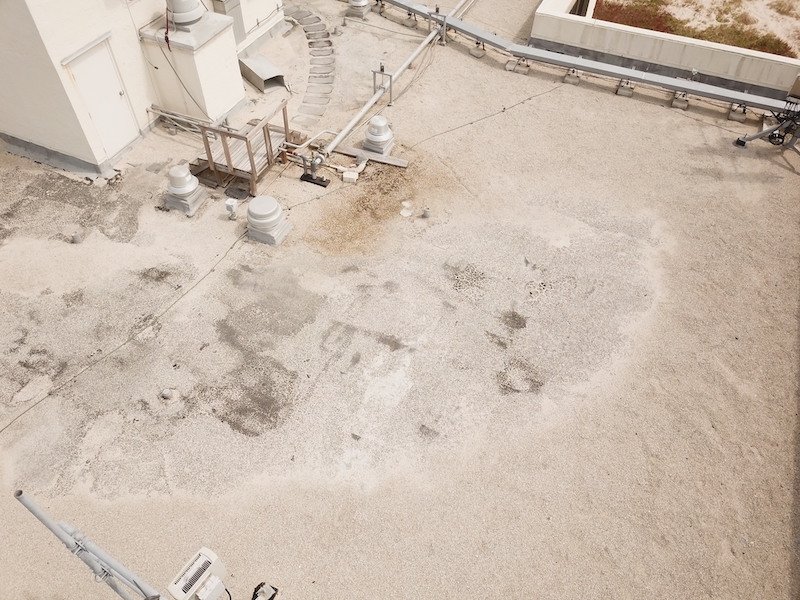
Roof Coatings
Roof Coatings are typically applied by spraying the product with the appropriate sprayer or by hand-rolling directly onto the existing roof surface. Newly applied liquid roof coatings seal the existing roof, waterproofing it and sealing the roof penetrations and any small holes or openings in the roof that may have existed before. Most roof coatings can be applied over almost any existing roof, after careful consideration of the intended use or desired outcome. There are several types of roof coatings on the market today. The old saying,” You get what you pay for,” directly applies to roof coating and most roofing products in general. The low end of coatings is typically water-based such as low solid-based elastomeric and acrylic. The more high-end products, such as silicone with 100% solids will perform much better. We proudly install roof coatings manufactured by Firestone Building Products, Lucas Roof Coatings, and other major manufacturers of liquid applied flat roof systems.

Call Us For More Assistance
No matter your flat roofing needs, from repairs to flat roof replacement, we’ve got solutions that can be of help. Cook Roofing Company is ready to guide you through the inspection, repair, and replacement options that will work for your roof. With our emphasis on providing quality roofing, we make sure we our clients receive the best roofing services! Give us a call at (417) 334-4238 or use the contact form to get in touch with us today.

